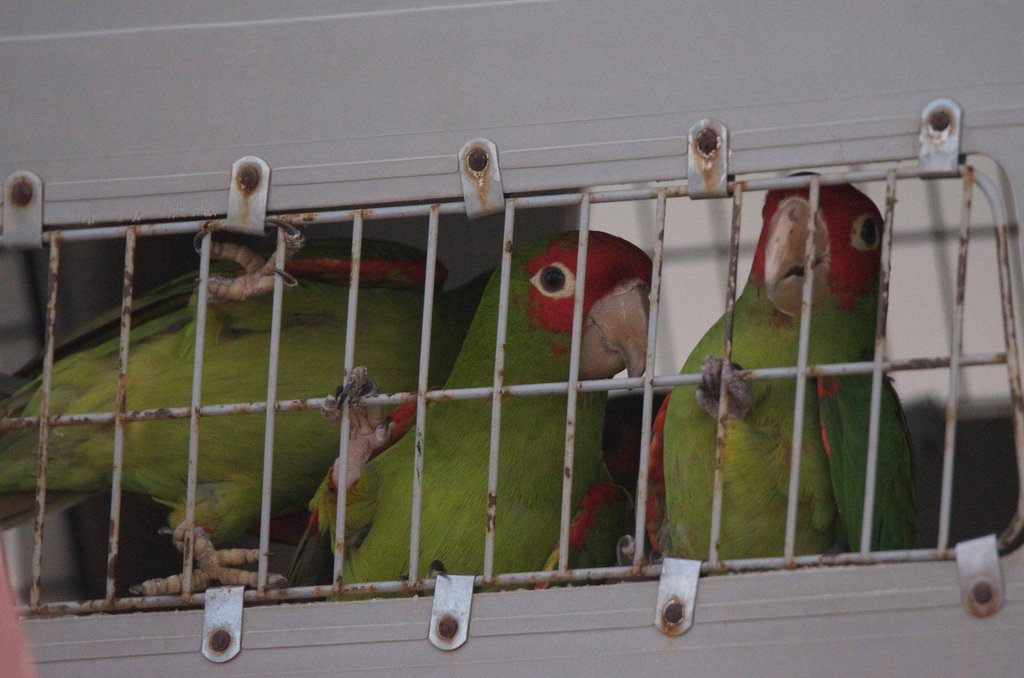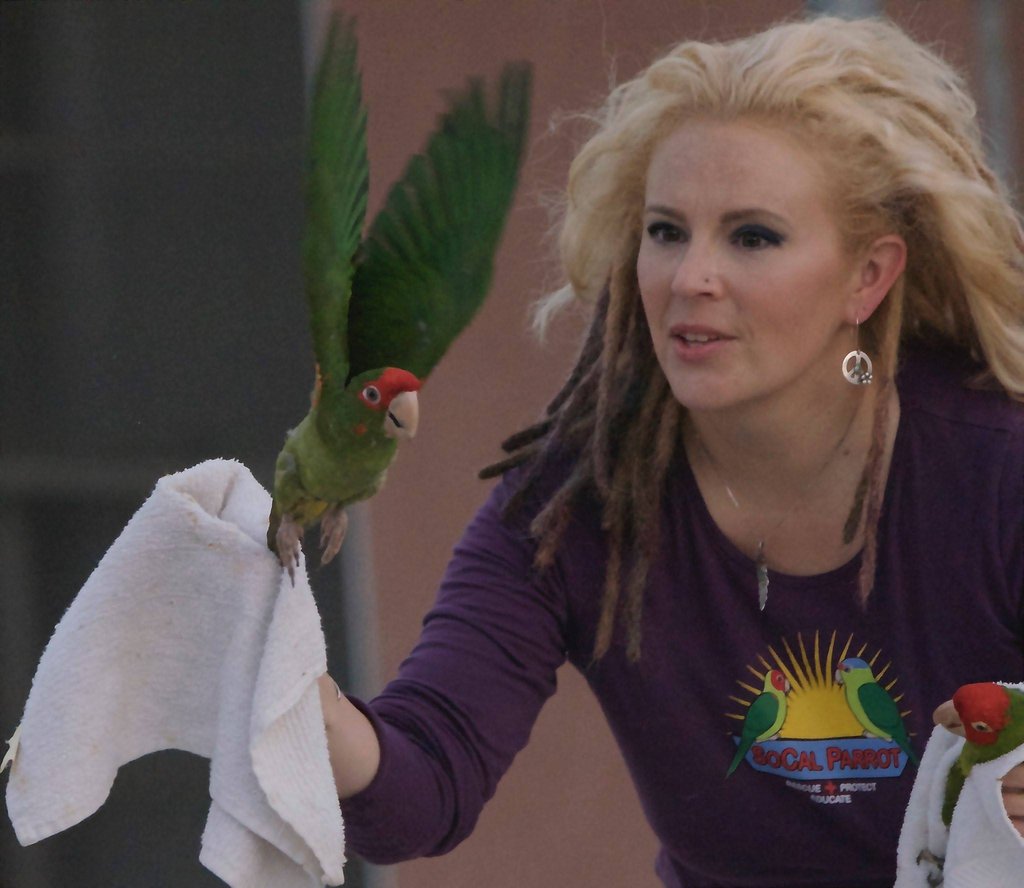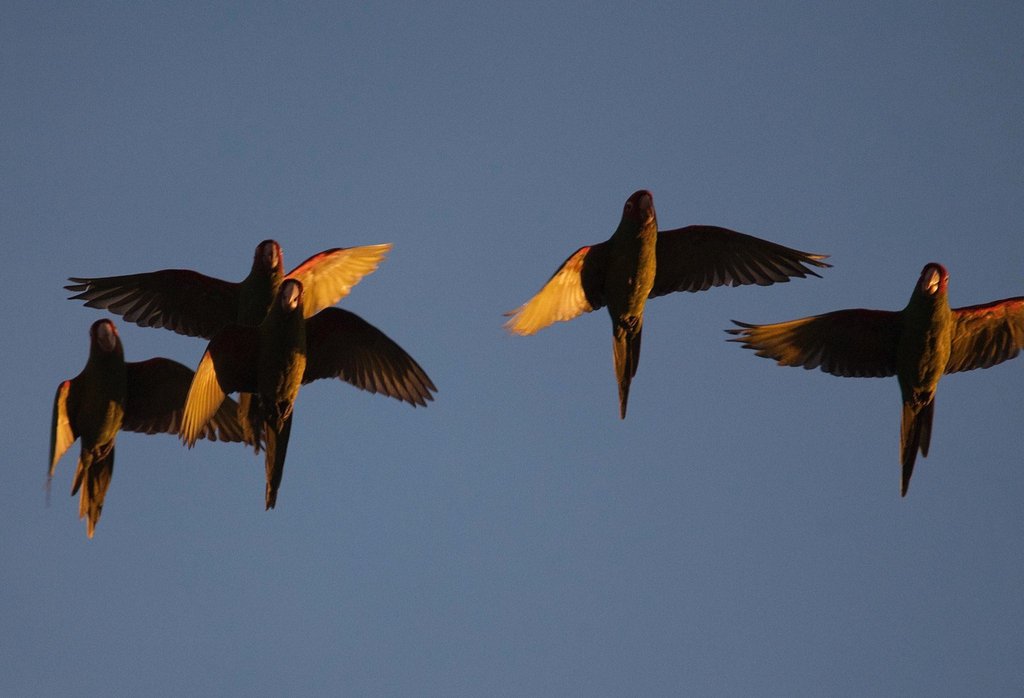By Joshua Bridwell | Project Leader
We released our first flock of parrots back into the wild in November of 2014! We call the "wild" the urban areas of San Diego and the parrots we released were all born and raised in the wild flocks that have been documented in San DIego for over 50 years. These flocks were started by intentional and unintentional releases. We have heard stories of releases at the border to avoid inspection, fires at pet stores, and pet releases. Keep in mind that a parrot in a pet store or labeled a pet does not mean that they are domestic and tame animal. Before the Wild Bird Conservation Act was passed in 1992, a majority of the birds brought in to the US were taken from the wild. It makes sense that the four established species in San Diego, Red-Crowned Amazons, Lilac-Crowned Amazons, Red-Masked Conures and Blue-Crowned Conures. So you have a majority of the birds that established these flocks being truly wild parrots. With lifespans upwards of 80 years, in theory the parrots seen 50 years ago could still be alive and well. The parrots we released were all brought to us from these wild flocks as injured juveniles or adults as well as babies. A majority of the birds we released came to us as babies and fledglings. These flocks are naturalized, they are non-native but they sustain and increase their numbers through reproduction.
We have been criticized as an organization for not releasing our parrots sooner than we did. When we started this organization with the intent of releasing wild parrots that we have rehabilitated, we decided that we would not release until we had approval from US and California Fish & Wildlife. We knew this would take time and effort. If we truly beleived in our cause and the right of these endangered species to live out their life in a new environement, we wouldn't be doing them justice if we went out in secret and hid our intent to let these parrots re-join their flocks. Both the US and California Fish & Wildlife have given us approval for our release. The Red-Crowned Amazon is listed as an endangered species by the IUCN but has not been recognized as endangered by USFW. The Red-Crown has been on the candidate list since 2011 to be listed as endangered and has the highest rating to be next inline to be listed as endangered. Unfortunately, the USFW says that these Amazons cannot be listed at this time due to budget constraints. Currently, it is estimated by USFW that half of the native population in Mexico has expanded their native habitat to include Texas, to the point that half of the wild population form Mexico currently exists in Texas. These parrots have naturally expanded their range to Texas due to the decimation of their traditional habitat.
The release took a lot of planning. We decided to release in November because that gives the babies we started seeing in June have fledged and are flying and time to be together with our permanent wild flock members that we have in our flight aviary. This also allows these parrots several months to integrate into the existing wild flocks. In San Diego, a huge flock of Amazons congregate in El Cajon/Lakeside from the months of July through February were they spned the winter foraging over a large area and coming together at night at a single night roost for safety. In February, they retrun to the coast to breed. The largest flock occurs in Ocean Beach but they also breed in areas South as far as Imperial Beach, North as far as Oceanside and East as far as Spring Valley. We were lucky to have one of our volunteers find the night roost in El Cajon where we released our parrots. Up until this night roost, the most parrots I had seen at one time was 180 Amazons flying overheas at one time. That was impressive and loud. If you didn't know, Amazons scream as they fly. I was amazed to see 475 Amazons landing in a dozen trees within 5 minutes. It's hard to describe how amazing this is to see in person. It's also amazing how many people from the public completely ignore this unique experience that we are lucky enough to see in San Diego, they're too busy getting in their car to get on the freeway. The national Audubon Magaizine was there for our release so there will be a great article written as well as photographs of the event. I will post a link once the article appears, we are hoping it will come out in the May/June issue.
Our release was a great success and a great accomplishment for us. Our volunteers were able to attend to see the results of all of their hard work. This release was years in the making and our greatest accomplishment. We now know we can successfully release parrots back into existing flocks after they have been rehabilitated with other wild parrots after learning how to forage and fly with other wild parrots. We will be able to release now on at least a yearly basis going forward.
Project reports on GlobalGiving are posted directly to globalgiving.org by Project Leaders as they are completed, generally every 3-4 months. To protect the integrity of these documents, GlobalGiving does not alter them; therefore you may find some language or formatting issues.
If you donate to this project or have donated to this project, you can receive an email when this project posts a report. You can also subscribe for reports without donating.
Support this important cause by creating a personalized fundraising page.
Start a Fundraiser

